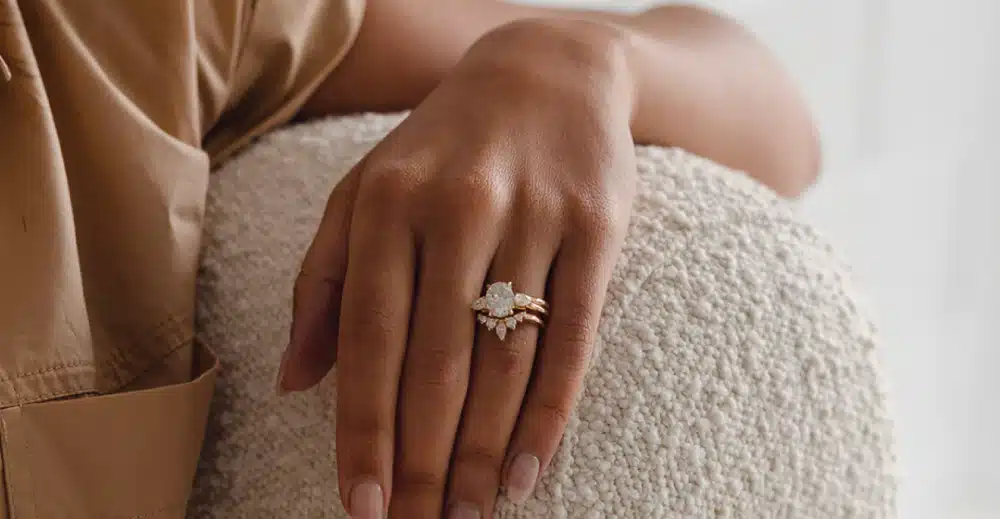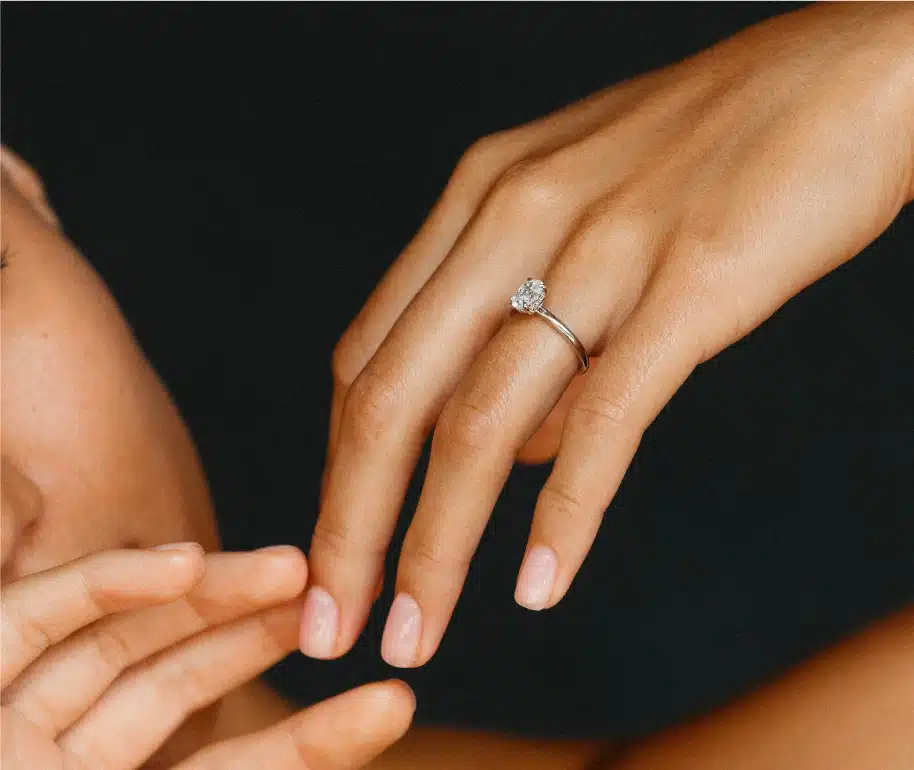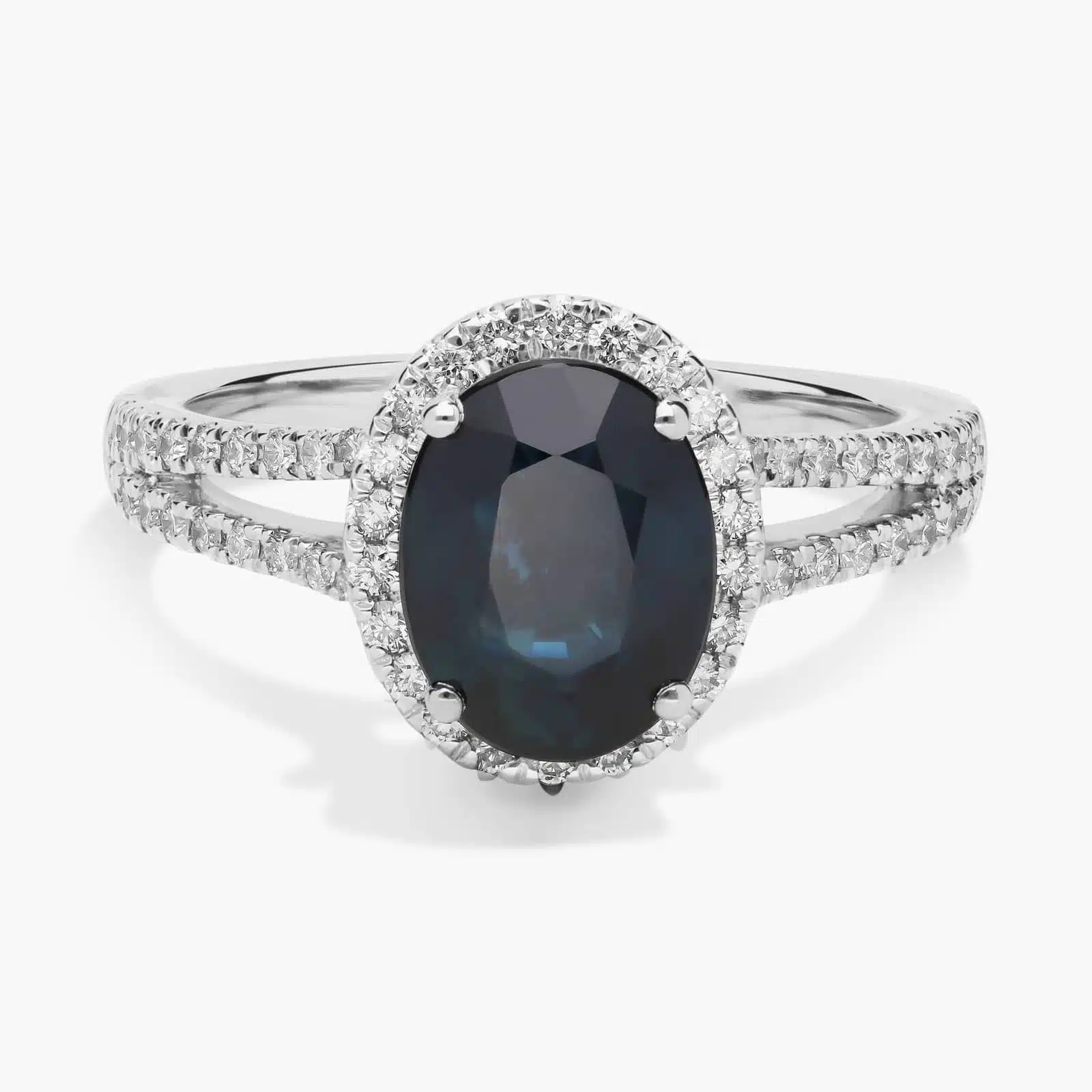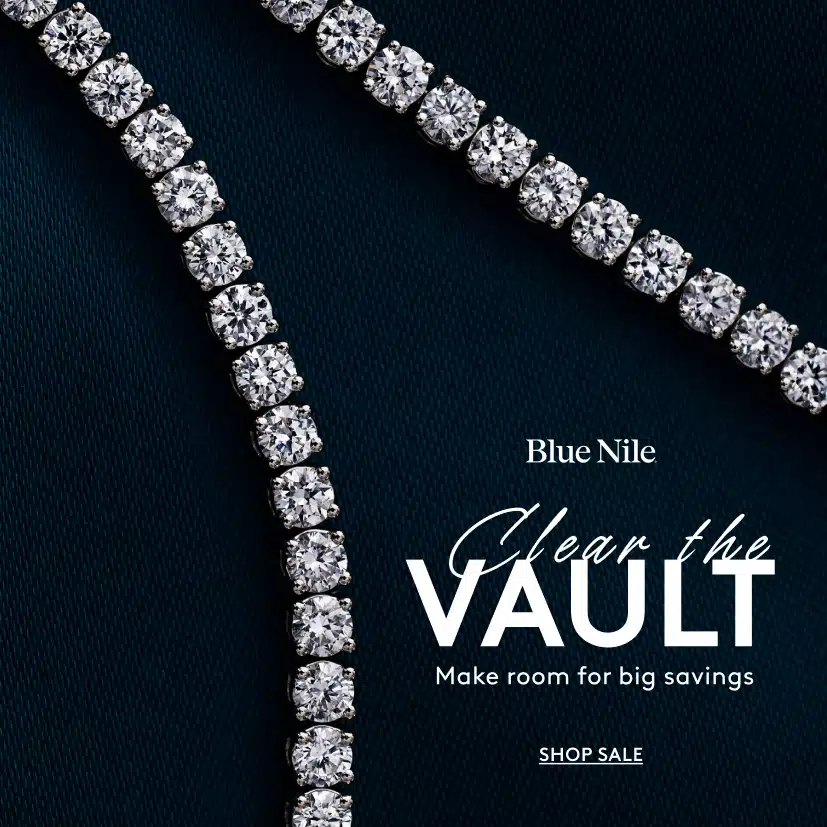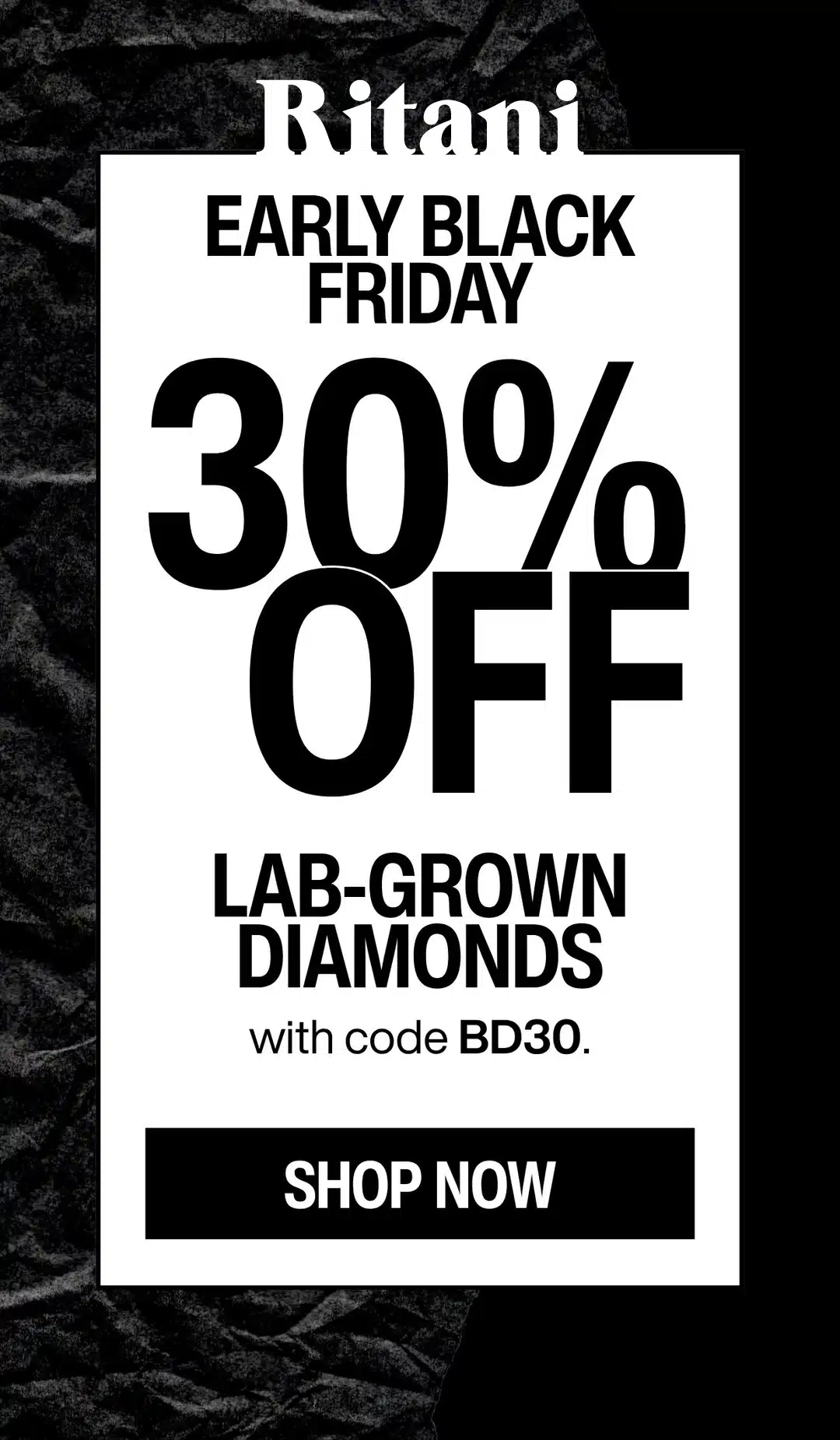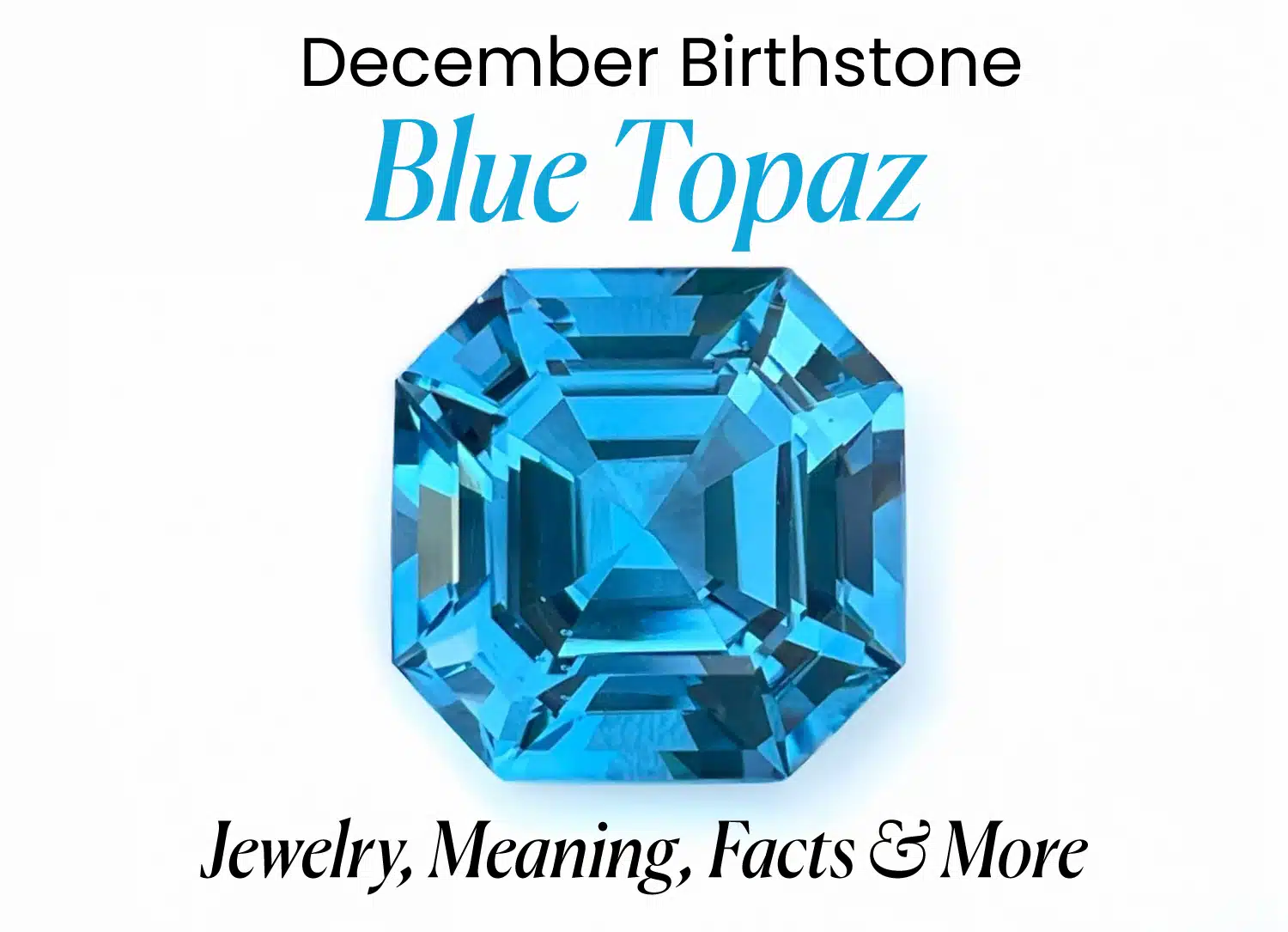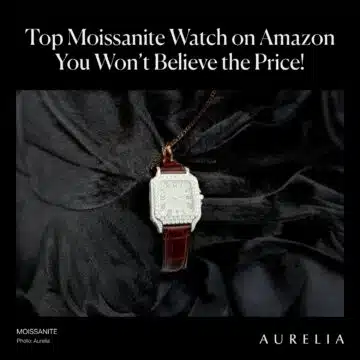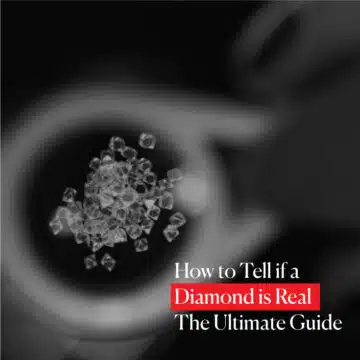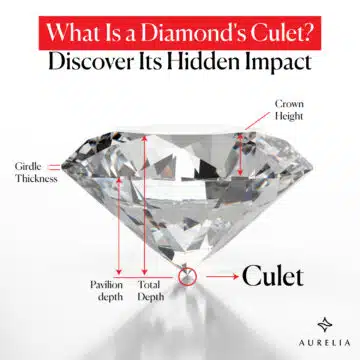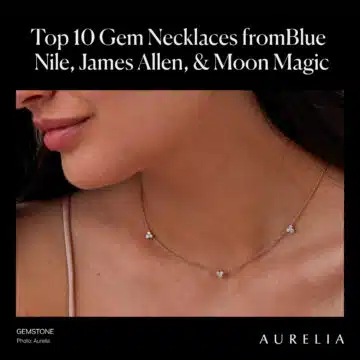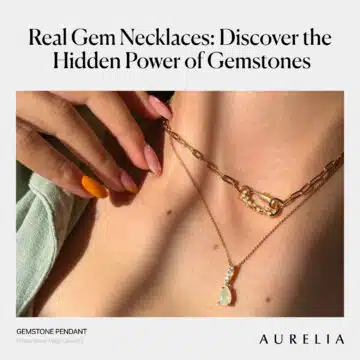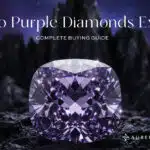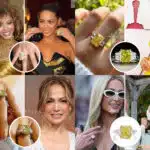The December birthstone, blue topaz, is a beautiful and durable silicate mineral prized for its range of stunning blue hues, from pale sky blue to rich London blue, symbolizing calmness and communication, and offering incredible value in all types of fine jewelry. For a look at the other gorgeous gems for this month, you can check out our full guide on what is December’s birthstone?
You’ve been captivated by the brilliant blue of a topaz gemstone, but the options are overwhelming. What’s the real difference between Sky Blue, Swiss Blue, and London Blue? How does it compare to Aquamarine or Sapphire? You want to know if it’s a high-quality choice and how to find the perfect piece.
As your friend in the business, I’m going to be your expert guide through the entire world of blue topaz. We’ll decode the colors, explore the deep history and meaning, delve into the gemological facts, and I will give you a complete buyer’s guide to choosing the perfect blue topaz jewelry with absolute confidence.
- The Three Personalities of Blue Topaz (The #1 Thing You Must Know)
- A Jeweler's Guide to the Blue Topaz Color Chart
- The Gemological Secret: How Blue Topaz Gets its Color
- The Gemological File: Key Blue Topaz Facts
- From the Ancients to Today: The History of Topaz
- The Stone of Calm Communication: Blue Topaz Meaning & Chakras
- How to Choose the Perfect Piece
- The Showdown: Blue Topaz vs. Its Gemstone Rivals
- Understanding Blue Topaz Value Per Carat
- How to Care for Your Blue Topaz Jewelry
- Your Blue Topaz Questions, Answered
- The Verdict: A Timeless, Beautiful, and Incredibly Smart Choice
The Three Personalities of Blue Topaz (The #1 Thing You Must Know)
Before we dive into anything else—the meaning, the history, the price—we have to start here. This is the single most important thing you must understand before you even think about buying a piece of blue topaz jewelry.
Unlike a diamond where you’re looking for an absence of color, the beauty of blue topaz is defined by its color. And not all blue is created equal.
The main point of confusion for buyers is that the term “blue topaz” actually refers to three very distinct and beautiful shades, each with its own personality and price point. As your friend in the business, I’m here to decode them for you.
A Jeweler’s Guide to the Blue Topaz Color Chart
This isn’t just a list; it’s a guide to finding the exact vibe you’re looking for. Getting to know these three blues is the key to choosing the perfect stone.
| Feature | Sky Blue Topaz | Swiss Blue Topaz | London Blue Topaz |
| The Color | Pale, clear sky blue | Bright, electric blue | Deep, inky teal-blue |
| The Vibe | Delicate & Serene | Fun & Vibrant | Sophisticated & Moody |
| Value | Most Affordable | Mid-Range Price | The Most Valuable |
Now, let’s go deeper into the personality of each of these incredible shades.
A Deep Dive on Sky Blue Topaz
Sky Blue Topaz is the most delicate and understated of the three. It’s a whisper of color, a serene and tranquil light blue that feels incredibly classic.
- Appearance: Its color is like a crisp, clear winter sky.
- Cut is Key: Because the color is so light, it relies heavily on a high-quality cut to maximize its brilliance and life.
- Best For: It’s a perfect choice for someone who loves a subtle hint of color for everyday wear.
- My Pairing Advice: It looks absolutely fantastic set in cool metals like sterling silver or white gold. The Sterling Silver Blue Topaz and White Topaz Stud Earrings from Blue Nile are a perfect example of this classic combination.
A Deep Dive on Swiss Blue Topaz
This is the most popular and commercially vibrant shade. Swiss Blue Topaz is that bright, electric, almost neon blue that you simply cannot miss.
- Appearance: Think of the bright, vivid blue of a Caribbean sea.
- Personality: It has a joyful and energetic vibe that is incredibly eye-catching.
- Best For: Its vivid saturation makes it the perfect choice for a bold statement piece, like a cocktail ring or a large pendant.
- My Pairing Advice: It looks stunning against all skin tones and provides a massive pop of color that pairs well with any metal. The Swiss Blue Topaz and Blue Topaz from Blue Nile is a great example of its bold look.
A Deep Dive on London Blue Topaz
This is the connoisseur’s choice. A London Blue Topaz is the deepest, richest, and most saturated of the three, and as a result, it’s the most valuable.
- Appearance: Its color is not just blue; it’s a complex and sophisticated deep teal with subtle, moody undertones of grey or green.
- Personality: It has a romantic and undeniably luxurious feel. It feels substantial and important.
- Best For: Anyone looking for a dramatic and elegant gemstone with real character.
- My Pairing Advice: Pairing a london blue topaz ring with yellow gold is one of my favorite combinations. The warmth of the gold makes the deep teal color incredibly rich.
The Gemological Secret: How Blue Topaz Gets its Color
Now, I’m going to pull back the curtain on a little industry secret. You might be wondering how nature produces three such perfectly distinct shades of blue. The fascinating truth is, for the most part, it doesn’t.
The vast majority—over 99%—of the blue topaz you see on the market started its life as a natural, colorless white topaz. These stones are then put through a highly advanced, 100% safe, and completely permanent enhancement process involving irradiation and sometimes gentle heat to create the beautiful, consistent topaz blue color that we all love.
- This isn’t a modern trick; it’s been the industry standard for decades.
- This process is what makes beautiful blue topaz so wonderfully accessible.
- A truly natural blue topaz with a deep, saturated color that has not been treated is exceptionally rare and is a true collector’s gemstone.
The value premium for an untreated stone is a major factor in the gemstone world. We see the same principle with other gems, and we explore this in our guide to the unheated blue sapphire, where the lack of treatment can increase a stone’s value exponentially.
You can wear your treated blue topaz with absolute confidence, knowing its beautiful color is stable and will last a lifetime.
The Gemological File: Key Blue Topaz Facts
Now that you can see the difference between the three shades, let’s get into the “on-paper” stats. As a gemologist, this is the part I love. Understanding the science behind your blue topaz gemstone is the key to truly appreciating its quality and value. I’ve broken down the key facts into this simple, scannable table.
| Gemological Property | The Official Data | What This Means for You |
| Mineral | Topaz (Aluminum Silicate) | A natural, durable mineral. |
| Hardness (Durability) | 8 on the Mohs Scale | Very durable, great for everyday wear. |
| Refractive Index | 1.61 – 1.63 | This gives it a bright, glassy “vitreous” luster. |
| Primary Sources | Brazil, Sri Lanka, Nigeria | Widely available, which helps its affordability. |
| Birthstone Month | December | A primary birthstone for the month. |
A Jeweler’s Take on the Data
- Mineral & Hardness: Topaz is a silicate mineral, a strong and stable crystal that is perfectly suited for jewelry. Its hardness of 8 on the Mohs scale is a huge advantage.
This makes it significantly more scratch-resistant than stones like quartz (7) or opal (5.5-6.5), meaning it is more than tough enough for an everyday piece like a blue topaz ring.
We see a similar hardness in stones from the beryl family, and our guide on what is the fracture of beryl offers a great comparison. - Refractive Index: This is a measure of how much a gemstone bends light, which translates directly to its brilliance. At 1.61-1.63, a well-cut topaz has a bright, almost glassy (what we call “vitreous”) luster that returns light beautifully.
- Sources & Birthstone: The widespread availability of high-quality white topaz from sources like Brazil is the reason the treated blue varieties are so affordable. Its designation as the primary blue topaz december birthstone gives it a special significance for anyone born in that month.
From the Ancients to Today: The History of Topaz
When you wear a topaz, you’re connecting to a rich and fascinating history that goes back thousands of years. The name “topaz” itself is believed to come from the Old Greek name for a small island in the Red Sea, “Topazios,” which is now known as Zabargad.
Others believe it stems from the ancient Sanskrit word “tapas,” which means fire—a fitting name for the fiery, golden imperial topaz that was so prized by ancient civilizations.
For centuries, topaz has been a stone associated with strength and protection.
- The Ancient Greeks believed that a topaz could make its wearer invisible in times of danger and give them incredible strength.
- The Ancient Romans linked the golden topaz to Jupiter, their god of the sun.
- During the Renaissance in Europe, it was believed that a topaz could break magic spells and dispel anger.
The Stone of Calm Communication: Blue Topaz Meaning & Chakras
While the ancient lore often focused on the fiery yellow and orange varieties of topaz, in the modern world of crystal healing and metaphysics, the cool, serene energy of blue topaz has made it one of the most important and beloved stones. The core blue topaz meaning is centered on communication and emotional balance.
Your Communication Supercharger (The Throat Chakra Connection)
In spiritual practices, the blue topaz stone is powerfully linked to the Throat Chakra (or Vishuddha), which is located at the base of the throat. This is considered the body’s energy center for communication, truth, and self-expression.
- Speaking Your Truth: Wearing a blue topaz necklace or a blue topaz pendant is thought to help the wearer speak their truth clearly, calmly, and with compassion. It’s considered a perfect stone for writers, speakers, teachers, or anyone who needs to communicate complex ideas.
- Enhancing Connection: It’s also believed to enhance your ability to listen, fostering a deeper and more authentic connection in your relationships. For another gemstone with a powerful connection to communication, see our guide to the birthstone color for the month of March, the Aquamarine.
The Stone of Calm and Clarity
Beyond communication, the other key significance of blue topaz is its calming and soothing energy. The beautiful blue topaz water-like color is thought to have a cooling effect on both the body and the mind.
- Emotional Balance: It is believed to help soothe fears, cool down hot tempers, and stabilize emotions during stressful times. It’s considered a stone of emotional release, helping the wearer to let go of anger and tension.
- Mental Clarity: Wearing a piece of blue topaz jewelry is thought to help you see complex situations with more clarity and less emotional charge, promoting a more logical and balanced perspective. This is a powerful stone for anyone seeking a bit more calm and focus in their daily life.
How to Choose the Perfect Piece
You’ve mastered the colors, the history, and the meaning of this incredible December birthstone. Now for the truly exciting part: choosing the perfect piece of blue topaz jewelry to make your own. The beauty of blue topaz is its incredible versatility.
From a delicate, everyday ring to a show-stopping necklace, its range of blues can suit any style. Let’s walk through the most popular options and I’ll show you some of my favorite real-world examples.
The Blue Topaz Ring: A Statement of Serenity
The blue topaz ring is, without a doubt, the most popular way to wear this beautiful gem. There’s a style for every personality, whether you’re looking for an engagement ring or a beautiful right-hand ring.
- For the Minimalist: A simple solitaire setting is a timeless choice that lets the stunning color of the topaz be the star. The Sterling Silver Blue Topaz Ring from Blue Nile is a perfect example of this classic elegance, offering a huge amount of style for an incredibly accessible price.
- For the Vintage Lover: The clean lines of an emerald cut blue topaz ring evoke the glamour of the Art Deco era, while an antique blue topaz ring with milgrain details feels like a precious heirloom.
- For the Maximalist: A blue topaz and diamond ring is the ultimate statement. A central blue topaz surrounded by a halo of brilliant white diamonds, like the Blue Topaz and Diamond Accent Ring from James Allen, creates a stunning, high-contrast look that is guaranteed to turn heads.
The blue topaz gold ring, especially a rich yellow gold, makes a particularly bold and luxurious statement. - For the Modern Groom: It’s not just for the ladies! The cool, sophisticated color of blue topaz has made the mens blue topaz ring an increasingly popular choice for a unique and stylish wedding band or statement ring.
And yes, if you love the idea of a pop of color for your special day, the durability and beauty of a blue topaz engagement ring or a blue topaz wedding band makes it a fantastic and deeply meaningful choice.
Blue Topaz Earrings: A Touch of Brilliant Blue
A pair of blue topaz earrings is one of the best ways to wear this stone, as they beautifully catch the light with every turn of your head and frame the face with a touch of brilliant color.
- For Everyday Elegance: You simply cannot go wrong with a classic pair of studs. Simple blue topaz stud earrings are a staple in any jewelry collection. For a bit of extra sparkle, a pair like the Blue Topaz and White Topaz Stud Earrings from James Allen is an incredibly versatile and savvy choice.
- For a Special Occasion: A pair of dramatic drop earrings is the perfect finishing touch for an evening out. A design like the Gold Plated Silver Pink Amethyst and White Topaz Drop Earrings from Amazon (which they also make in a beautiful blue topaz version) showcases how beautifully the stone can be faceted to create a cascade of light and color.
- For the Luxury Lover: A pair of london blue topaz earrings, especially set in warm yellow gold, is the height of sophistication. The deep, inky blue of the stones creates a dramatic contrast, making blue topaz gold earrings a truly stunning combination.
Blue Topaz Necklaces & Pendants
The blue topaz necklace is a timeless centerpiece that rests near the Throat Chakra, making it an especially meaningful piece for a stone that symbolizes communication.
- For Simple Sophistication: A single, beautifully cut blue topaz pendant is the essence of understated elegance. A piece like the Yellow Gold Blue Topaz Teardrop Pendant from James Allen is a perfect example—it’s classic, versatile, and allows the stunning gem to speak for itself.
- For an Elevated Look: For a touch more glamour, a blue topaz necklace with diamonds is a perfect choice. Even a small diamond halo or a few accent diamonds on the bail can transform a simple pendant into a truly special piece of fine jewelry.
A beautiful and accessible option like the Gold Plated Silver Blue Topaz Necklace from Blue Nile shows how a simple design can have a huge impact.
Blue Topaz Bracelets: The Finishing Touch
The blue topaz bracelet is a wonderful way to add a continuous stream of serene color to your wrist.
- The Ultimate Classic: The blue topaz tennis bracelet is a true showstopper. An unbroken line of perfectly matched blue topaz stones is the height of classic, colorful luxury.
- The Perfect Pairing: Blue topaz plays beautifully with other gemstones. A great example of this is the Sterling Silver Blue Topaz and Aquamarine Bracelet from Amazon.
This piece is not only beautiful, but it’s a fantastic real-world tool for comparing the vibrant, saturated color of blue topaz against the light, delicate color of aquamarine right on your wrist.
For an even richer look, a Gold Plated Silver Multi-Gemstone Bracelet from James Allen can create a stunning mosaic of color.
The Showdown: Blue Topaz vs. Its Gemstone Rivals
You’re in love with the color, but the final step to buying with complete confidence is understanding how blue topaz stacks up against its closest competitors in the blue gemstone world.
As your friend in the business, I want to walk you through the two most important head-to-head battles: the one for value (against Aquamarine) and the one for prestige (against Sapphire).
This is the insider knowledge that will make you a true gem connoisseur.
Aquamarine vs. Blue Topaz: The Ultimate Blue Gemstone Battle
This is, without a doubt, the single most important and most common comparison in the world of blue gems. Aquamarine and blue topaz are both beautiful, durable, and share a similar color family, which can be incredibly confusing for a new buyer. Let’s break it down feature by feature so you can see the critical differences.
The core difference between these two gems is the personality of their color.
- The Color of Aquamarine: An Aquamarine’s beauty is in its subtlety. Its color is a delicate, pastel, light blue with distinct greenish undertones. Think of the crystal-clear water of a calm lagoon.
High-quality aquamarines are prized for this ethereal, watery transparency. A fantastic resource for understanding its unique beauty and worth is our complete guide on the price of aquamarine gemstone. - The Color of Blue Topaz: Blue topaz, especially Swiss Blue Topaz and London Blue Topaz, is a completely different story. Its beauty is in its vibrant saturation.
It delivers a bold, bright, and pure blue that is much more electric and intense than the soft color of an aquamarine. It is a gemstone that makes a powerful statement.
For an everyday piece of jewelry, both are fantastic choices. They are, in fact, very close siblings in terms of hardness, and both are more than durable enough for a lifetime of wear.
- Aquamarine Hardness: Aquamarine is a member of the beryl mineral family and has a hardness of 7.5 to 8 on the Mohs scale.
- Blue Topaz Hardness: Topaz is its own mineral family, and it has a slightly higher and more consistent hardness of 8 on the Mohs scale. While this gives it a slight technical edge in scratch resistance, in the real world, both stones are exceptionally tough.
This is the most significant and often shocking difference between the two, and it’s the one that makes blue topaz such an incredible buy.
- Aquamarine Price: Fine, gem-quality aquamarine is significantly rarer than topaz. Because of this rarity, you can expect to pay anywhere from 5 to 10 times more for a high-quality aquamarine than you would for a blue topaz of the exact same size and visual quality.
- Blue Topaz Price: As we’ve discussed, because the beautiful blue color is reliably created by treating abundant and clean white topaz, the market has a steady supply. This keeps the price exceptionally affordable.
| Feature | Blue Topaz | Aquamarine |
| Color | Saturated, Pure Blues | Pastel, Greenish-Blues |
| Durability | Excellent (8 Mohs) | Excellent (7.5 – 8 Mohs) |
| Price | Exceptionally Affordable | Significant Premium (5-10x) |
Blue Topaz vs. Sapphire: Value vs. Prestige
Now for our second showdown. Comparing a blue topaz to a blue sapphire isn’t really a battle of equals; it’s a perfect lesson in the difference between a semi-precious and a precious gemstone.
The deepest, richest London Blue Topaz can sometimes have a color that approaches the beautiful, inky blue of a sapphire. However, a top-quality blue sapphire possesses a velvety, royal blue saturation and depth that is completely unparalleled in the gem world.
While a London Blue is a stunning and sophisticated deep blue, a fine sapphire is in a league of its own.
Here, the difference is significant. Sapphire, as a member of the corundum mineral family, has a hardness of 9 on the Mohs scale. This makes it the second-hardest gemstone on the planet, behind only a diamond. This gives it a clear and measurable advantage in lifelong scratch resistance over a blue topaz (at an 8).
This is where we see the true value difference. A high-quality blue sapphire is one of the “big three” precious gemstones (along with ruby and emerald) and is exponentially rarer and more valuable than a blue topaz.
- A fine, 1-carat blue topaz might cost you $50.
- A fine, 1-carat blue sapphire could cost anywhere from $1,000 to $5,000 or more, depending on its color, clarity, and origin. For a true deep-dive into this incredible gem, our complete guide to the September birthstone, Sapphire is an essential read.
| Feature | Blue Topaz | Blue Sapphire |
| Prestige | Beautiful Semi-Precious Gem | Iconic “Big Three” Precious Gem |
| Durability | Excellent (8 Mohs) | The Pinnacle (9 Mohs) |
| Price | Exceptionally Affordable | The Ultimate Premium |
My Mehedi’s Take: You choose a sapphire when you want the prestige, the heirloom quality, and the legendary durability of one of the world’s most treasured precious gems.
You choose a blue topaz when you want that beautiful blue color story in a durable and stunning package for a tiny fraction of the cost. It is, and will always be, one of the single best values in the entire world of jewelry.
Understanding Blue Topaz Value Per Carat
Alright, we’ve talked about how affordable blue topaz is in a general sense, but let’s get down to the hard numbers. As your friend in the business, I want you to walk into any store or browse any website with a clear, realistic idea of what you should be paying.
One of the most wonderful things about the blue topaz stone is that its price isn’t shrouded in the same kind of mystery and complexity as a diamond’s. The value is direct, accessible, and tied to a few key quality factors. The blue topaz price per carat typically falls into these ranges:
- Sky Blue Topaz: Expect to pay between $10 and $30 per carat. Its wide availability makes it incredibly affordable.
- Swiss Blue Topaz: The price increases with the color saturation. Expect to pay between $20 and $40 per carat.
- London Blue Topaz: As the rarest and most saturated of the three, it commands the highest price. Expect to pay between $30 and $60 per carat for a fine quality stone.
As you can see, even the most valuable London Blue Topaz represents one of the most incredible bargains in the gem world. Now, let’s break down how gemologists arrive at that final blue topaz value.
The 4Cs of Blue Topaz
Just like with diamonds, the value of a blue topaz is determined by a version of the classic 4Cs. However, the order of importance is completely different.
For a blue topaz, color is king. This is the single biggest driver of its value. A professional is looking at three things:
- Hue: Is it a pure blue, or does it have unwanted grayish or greenish tones? A pure, rich blue is the most valuable.
- Tone: How light or dark is the color? The most desirable stones are not too light and not too dark, but right in that perfect middle range.
- Saturation: This is the big one. How intense and vivid is the blue? A stone with deep, rich saturation is always more valuable than one that looks pale or washed out. The intense saturation of a fine London Blue is why it’s the most prized of the three.
High-quality blue topaz is what we in the trade call a “Type 1” gemstone, which means it is typically “eye-clean.” This means it should be free of any inclusions that are visible to the naked eye. Because clean material is relatively abundant, you should not have to compromise on clarity. Insist on a stone that looks clean and clear.
The quality of the cut is crucial for unleashing a topaz’s brilliance. A master cutter will orient the crystal and shape the facets to maximize the stone’s light return and to show off the richest possible color. A poorly cut stone, no matter how good its color, will look dull and lifeless.
Unlike precious gems like diamonds or sapphires, where the price-per-carat jumps exponentially as the stones get larger, the pricing for blue topaz is much more linear. Because beautiful, large crystals are available, the price-per-carat does not dramatically increase for a 5-carat stone versus a 1-carat stone.
This is fantastic news for you—it means that a big, bold, beautiful blue topaz gem is well within reach for almost any budget.
How to Care for Your Blue Topaz Jewelry
You’ve found your perfect piece of blue topaz jewelry; now, how do you keep it looking spectacular for a lifetime? The good news is, it’s incredibly easy.
With its 8 on the Mohs scale of hardness, a blue topaz stone is very durable, but a simple and consistent care routine will protect it from unnecessary damage and keep it brilliantly sparkling.
Your Simple Cleaning Routine
- The best method for cleaning is also the simplest: a small bowl of warm water with a few drops of mild dish soap (like Dawn).
- Let your jewelry soak for a few minutes to loosen any residue from lotions or daily life.
- Use a very soft toothbrush to gently scrub behind the stone and around the setting.
- Rinse thoroughly under warm running water and pat dry with a soft, lint-free cloth.
- Do this once a month, and your topaz will stay brilliant.
What to Avoid
- Harsh Chemicals: Never expose your blue topaz to harsh chemicals like bleach or cleaning fluids.
- Ultrasonic & Steam Cleaners: As an expert, I advise against using mechanical cleaners on your topaz. While it’s a hard stone, it can sometimes contain liquid-filled inclusions that could expand and cause a fracture under the heat and vibration. The gentle, at-home soap and water method is always the safest and most effective choice.
- Hard Knocks: While it’s very scratch-resistant, a very hard, direct blow can cause a topaz to chip. It’s always a good idea to take off your blue topaz ring before going to the gym, gardening, or doing any heavy lifting.
Your Blue Topaz Questions, Answered
You’ve got the full guide, but the world of gemstones is filled with specific, important questions. As your expert friend, I’m here to give you the direct, honest answers you need to feel like a true connoisseur.
Value, Price & Rarity
Authenticity & Gemological Facts
Spiritual Meaning & Astrology
The Verdict: A Timeless, Beautiful, and Incredibly Smart Choice
From its rich history and deep meaning to its stunning range of blue hues, the December birthstone blue topaz is far more than just a beautiful gem—it’s one of the best values in the entire world of fine jewelry.
Whether you’re drawn to the soft whisper of Sky Blue, the vibrant energy of Swiss Blue, or the deep sophistication of a London Blue Topaz, you are choosing a stone that is durable, beautiful, and incredibly affordable. Wear it with the confidence of a true gem connoisseur.
Continue Your Research Journey
You are now an expert on the beautiful blue topaz. If your love for gemstones has been sparked and you’re ready to explore other birthstones, deep dives on precious gems, or other beautiful alternatives, these hand-picked guides are the perfect next step.
Explore Other Birthstones
- Discover the King of Gems: The Ultimate Guide to Ruby, the July Birthstone – (https://moissanitebyaurelia.com/ruby-july-birthstone/)
- A Look at a Regal Favorite: What is the January Birthstone Color? – (https://moissanitebyaurelia.com/what-is-january-birthstone-color/)
- A Precious Green Gem: The Enduring Allure of the May Birthstone – (https://moissanitebyaurelia.com/may-birthstone/)
Advanced Gemology & Other Blue Gems
- A Deep Dive on Blue Topaz’s Sibling: All About the Sapphire Gemstone – (https://moissanitebyaurelia.com/sapphire-gemstone/)
- A Look at a Precious Green Alternative: The Difference Between an Emerald and Morganite – (https://moissanitebyaurelia.com/better-investment-emerald-or-morganite/)
- Understanding Gemstone Value: A Guide to Sapphire Value Per Carat Calculation – (https://moissanitebyaurelia.com/sapphire-value-per-carat-calculation/)
Guides to Other Popular Gemstones
- The Celestial Favorite: Your Ultimate Moonstone Engagement Ring Guide – (https://moissanitebyaurelia.com/moonstone-engagement-rings/)
- A Stone of Many Colors: Opal as an Engagement Ring: Pros & Cons – (https://moissanitebyaurelia.com/opal-as-an-engagement-ring/)
- A Guide to Curated Pieces: Our Top 10 Exquisite Gem Necklaces – (https://moissanitebyaurelia.com/top-10-exquisite-gem-necklaces/)


